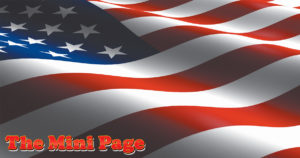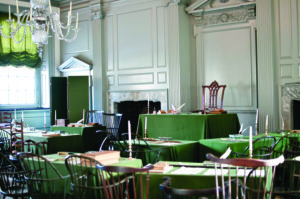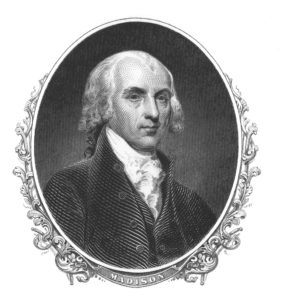
AMP | Kids is proud to partner with The Mini Page, celebrating over 50 years of providing engaging and fun learning opportunities to young readers across the country. This feature was originally syndicated in newspapers the week of February 15 – February 21, 2020. It is distributed digitally here with permission from Andrews McMeel Syndication. Enjoy and share with the young learners in your life!
The Constitution is the supreme law of our country. It is a set of basic laws organizing, granting and limiting the powers of our government. It is something that we all share.
Basic facts

The Assembly Room in Independence Hall in Philadelphia, Pennsylvania, is where the Constitution was debated and signed.
- It was created in Philadelphia …
- during the summer of 1787…
- in secret, in 87 days.
- It has 39 signers …
- and comprises a preamble, seven articles and 27 amendments that were added later.
The Constitution is handwritten on four parchment pages. Each page is about 29 inches high and 24 inches wide. The original is on display at the National Archives building in Washington, D.C. An archive is a place where important documents are preserved.
What are the big ideas?
Inside the Constitution are several big ideas:
- Separation of powers: The delegates feared that giving too much power to any person or group could be dangerous. So they created three branches, or parts, of government: executive, legislative and judicial.
- Checks and balances: This limits the power of each government branch. No single branch can overpower the others. Often, each branch needs the help of the others to do its job.
- Enumerated (e-NOOM-er-ate-ed) powers: the listed powers of government.
- Implied powers: the powers that are not listed but suggested.
- Federalism: the idea that our system divides powers among the national government and the state governments.
- The Constitution’s parts
This historic document has:
- A preamble (an introduction)Seven articles (sections), covering:
- Article I: The Congress (legislative branch)
- Article II: The president (executive branch)
- Article III: The judges and national courts (judicial branch)
- Article IV: How states relate to each other and the national government.
- Article V: How the Constitution can be amended, or changed.
- Article VI: The Constitution is the supreme law of the land.
- Article VII: Ratification, or approval.
- The signatures of 39 delegates.
James Madison
James Madison was a student of government and a great statesman. He is called the Father of the Constitution.
Madison, 36 when the Constitution was written, influenced what went on at the Constitutional Convention more than any other delegate. He wrote the Virginia Plan, a plan for the new government. Many of his ideas were adopted. He spoke often, and the delegates listened. He also took many notes and wrote detailed reports. His records are our best sources of what went on. These were not published until after his death.
Madison worked very hard for ratification. He is credited with 29 of the Federalist Papers, a collection of essays supporting the Constitution. He later served as a Virginia congressman and proposed the first 10 amendments (the Bill of Rights). After serving as secretary of state under Thomas Jefferson, he was elected as our fourth president. He lived longer than any of the other signers. He died at the age of 85 in 1836.
Resources
On the Web:
Teachers: For standards-based activities to accompany this feature, visit Andrews McMeel Syndication. And follow The Mini Page on Facebook!

